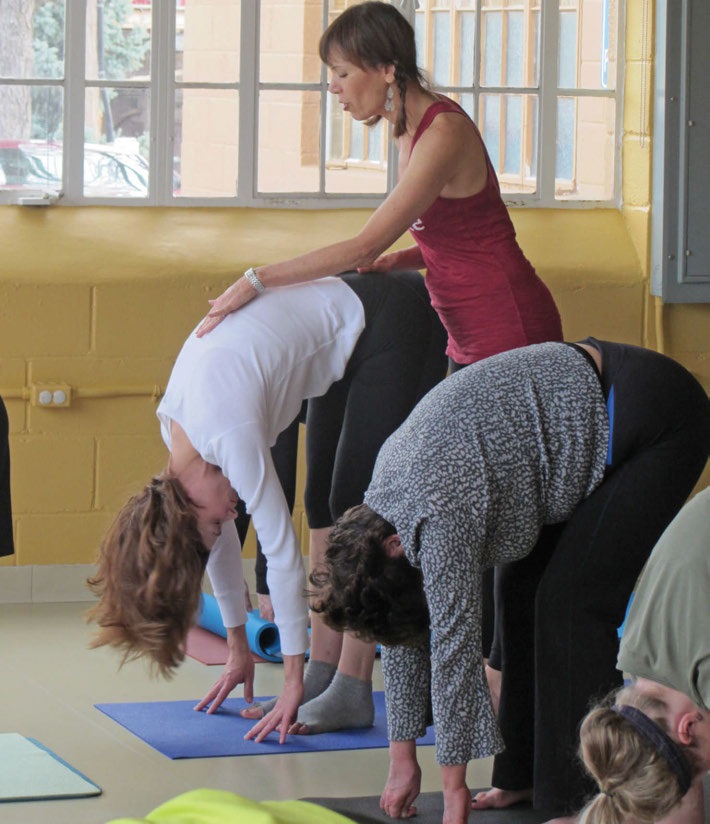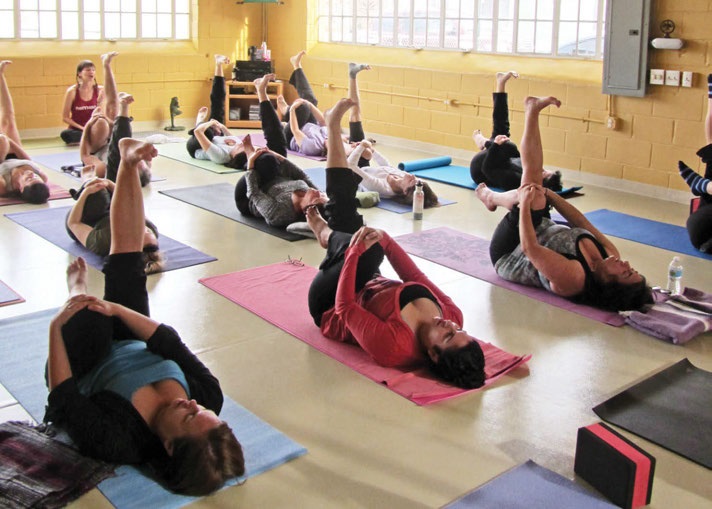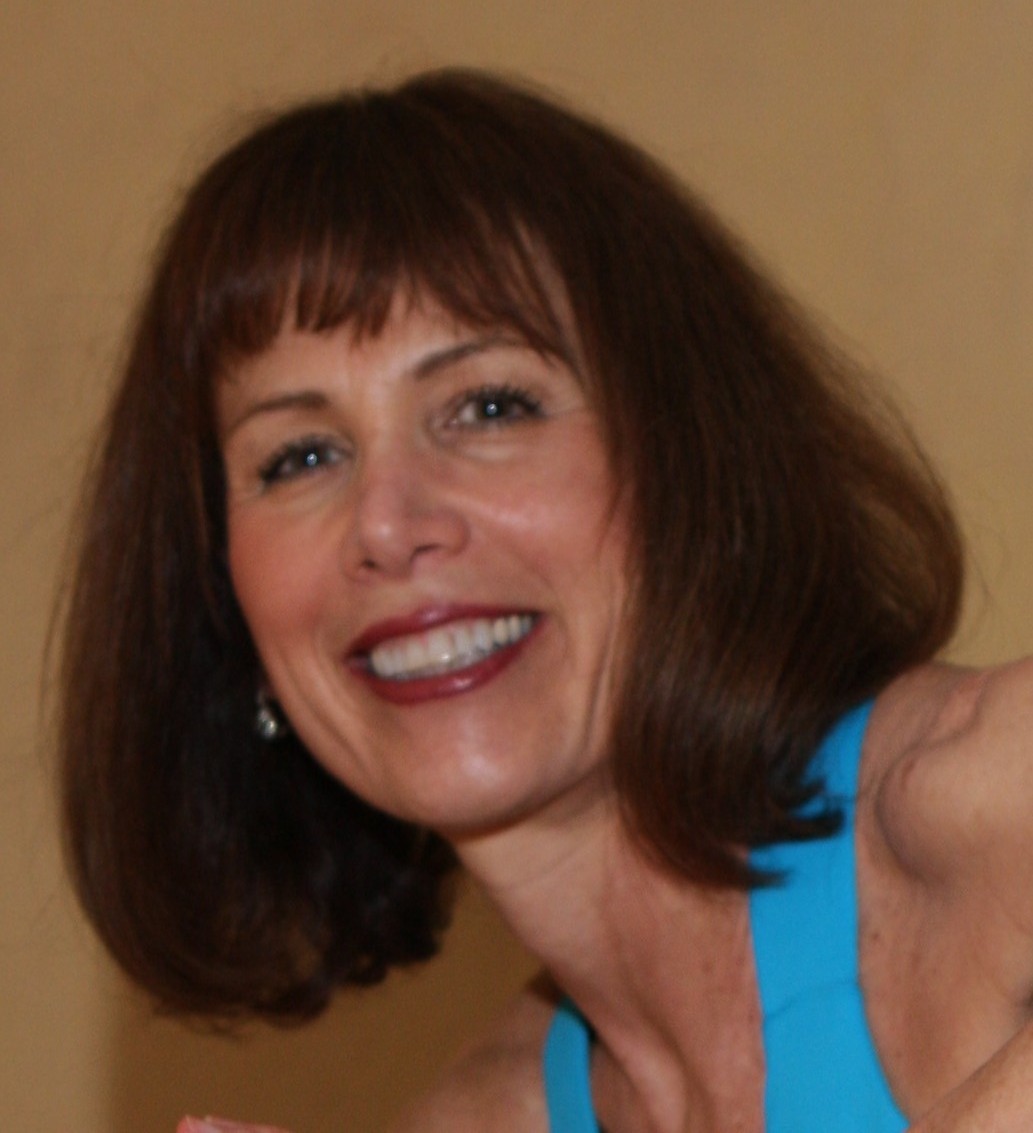This story originally appeared in the Spring 2014 edition of Yoga Therapy Today which is published by the International Association of Yoga Therapists.
This is the story of Anna, who has taught me much about yoga and healing. She is a survivor of long-term, childhood, complex trauma. I worked with Anna in a large public class and did not initially know her history, although I suspected there might be trauma in her past. Therefore, the therapeutic tools I used to assist her were the tools of a yoga teacher, although I am also a clinical psychologist.

Beginning her practice in December 2012, Anna attended at least one yoga class a week. Over time, I’ve witnessed Anna learn to relax and regulate her nervous system, release tension, and increase space and ease in her body. Through steady email correspondence, I was invited into Anna’s rich inner experience. By describing both her experiences in the body as well as her concomitant emotions and thoughts, Anna has illuminated the potent, profound healing power of yoga. With great courage and clarity, her writing describes how yoga helped ease her fears and disconnection and led her to a new, healthier relationship with her body, mind, and world.
I am honored to share Anna’s correspondence with you, with her permission. Anna has told me several times that face-to-face communication is difficult for her, but that her mind and heart open when she writes. She is the first student that communicated with me following almost every class. My responses to her tended to be brief and affirming. I did not inquire into her inner world, but applauded her self-reflection and occasionally suggested yoga resources (books, podcasts, etc.) that I thought might be supportive.
These emails tell her story.*
*Emails have been edited for clarity and brevity.
12/4/12
Ronda,
My psychotherapist speaks very highly of you and has suggested I try yoga in order to help with the tension and weight I carry on my body. I have some concerns about trying yoga as I am pretty overweight and cannot imagine being able to move and twist my body in how I envision yoga to misconceptions about how all of that works. I also carry a lot of shame and humiliation, so doing something of this nature would be pretty difficult to start. My main question is this: is yoga feasible for those of us that carry a lot of weight on our bodies?
—Anna
I invited Anna to my Sunday morning “Better Backs” class; it is the gentlest class I teach. The focus is on working the spine, hips, and hamstrings, gently and therapeutically. Students with a myriad of physical issues attend this class, and I strive for a holistic yoga practice, one that invites body, mind, and spirit participation. As a clinical psychologist and a Vipassana (insight meditation) practitioner, I often weave themes of breath awareness, mindfulness, kindness and compassion, nonjudgmental awareness, and self-care into every class.
Anna, a woman in her mid-fifties, arrived for class that Sunday clearly anxious and hesitant. I prepared a corner spot for her with mat and props (blocks, straps, and blanket). I’ve found these corner locations are good for overweight students, who often worry about their ability to get and up down from the floor.
From her initial email, I knew that Anna was working with my colleague, a talented, highly skilled psychotherapist, but Anna did not discuss her reasons for therapy with me. In that email, she described carrying shame, humiliation, and tension in her body. I was aware that these hinted at the possibility of past trauma, although I made no assumptions. As is the intention I hold for all of my students, I hoped yoga would provide Anna with a greater sense of bodily ease, space, and freedom.
12/9/12
Ronda,
I wanted to thank you for making my yoga experience so enjoyable yesterday. Not to say that I didn’t hurt and still hurt today, but I truly enjoyed the experience and I wanted you to know that. I really got that what you do with yoga honors the physical body in ways I have never experienced.
—Anna
2/3/13
Ronda,
I wanted to share with you that I am beginning to understand just how tight my body truly is. I am amazed to find myself saying that I am excited about slowly releasing that tension.
As yoga opens up the possibility of less tension and holding on physically, it does the same for the emotional body. I have experienced intense emotions in the last couple of weeks and have been able to hold that space—just as we hold that space open in practice. It’s subtle but so powerful.
And one day, I found that I was happy and, for the first time that I can ever remember, I was happy in that moment without feeling guilty. I was open to happiness, and the gratitude that I feel for that is beyond understanding.
This yoga practice goes beyond body work. It is something I have no words for.
—A
3/20/13
Ronda,
Thanks for recommending Amy Weintraub’s book Yoga for Depression. It has been a difficult read for me- it’s brought up lots of stuff around my habit of denial— but she gently pushes you in a way you can’t resist. I find it to be one of the treasures of my life and I thank you for guiding me in that direction. Despite my resistance, I sense a change that ever deepens. Sunday mornings have been like a can opener, slowly grinding away at my resistance to accepting what I have desired to uncover for the better part of this lifetime.
—A
3/27/13
Ronda,
I love my mat. Amy talks about the significance of having one’s own mat and I now understand what she has been saying.
Again, I notice I am happy. My mind is trying to make sense of this inner change. And cannot. All I know for sure is that it comes from yoga (and years of therapy leading up to this). I don’t know how or why. I think maybe it’s a good opportunity to practice surrendering to the truth of just being happy in this moment. Gosh, those words coming from me!
—A
During a retreat day I offered, I met privately with participants during lunchtime. In our private meeting, Anna confirmed what I had long suspected. She revealed that she was the survivor of long-term, repeated childhood incest perpetrated by her father. These chronic episodes of abuse, violation, and feeling trapped, particularly during early development, are referred to as “complex trauma.”

5/29/13
Ronda,
I wanted to share with you the breath-taking awareness of actually identifying my internal world and body. The longer we hold the poses, the more awareness I sense. I’ve tried to not get discouraged with having such a hard time sensing what is happening in my own body. I follow your words, knowing that they’ll lead me in the right direction. Sometimes I’ve walked out, ashamed of not being able to connect in the ways you describe during our practice. But I believed that if I would just continue to walk through that door and sit upon my mat, that in time it would come. The door is opening, my body is emerging. And the joy—how does one describe deep life-changing joy?
I was walking down the hall today and was aware that I have a body. You’ve given me a space to explore something that has horrified me—my own body. And most of all, I see that the horror I projected on my own body just isn’t necessary any more and doesn’t belong there.
—Anna
5/30/13
Ronda,
I cannot remember associating my attitude toward my body with the trauma. To be honest, I wonder, wow, how did I miss that? I think my therapist has been trying to tell me that for a long time. But I did not understand what she was saying. I simply refused to acknowledge I had a body. Now—I see.
I’ve been blaming myself, my inability to “get over” what has haunted me. Now, I see my trauma truly is in my body. I see my therapist’s wisdom in pushing me towards yoga. And I know that if anyone could get me to acknowledge my body, it would be you.
—A
7/22/13
Ronda,
The book you recommended, Overcoming Trauma through Yoga, has had a tremendous impact on me. I can now identify a way that I can learn to live with trauma and accept it. To move away from trying to find blame (usually myself) or trying to find some way to explain the sense of being wounded that won’t go away. To begin to understand why after all this time I still internally flinch when someone— especially a man—gets close to me. So many of the things that I have thought/felt/imagined as being what separated me from the rest of the world I am learning are just not true. I see so much of who I have been in this book, and I get such a sense of deep relief.
But the most precious gift of all has been to understand that all of this hauntedness, frozenness, and overwhelmingness is not because I am flawed. I experience what so many others have experienced—and it’s OK. It’s OK that it’s difficult and not an “easy fix.” It’s OK that I need help.
And with this also comes a realization that as I continue to connect with my body and learn to recognize its reactions, I can begin to live with the trauma and not as a result of it.
—Anna
8/14/13
Ronda,
For the last couple of weeks, I have been experiencing memory flashes that have been quite intense during the yoga sessions. For the first time in my life, I was aware of a young me. I understand what is happening and welcome the slow, sure release. It has been difficult to experience that depth and then just walk out and drive home. So, I have a favor to ask you. Could I maybe just walk up to you after class when I am feeling a little out of sorts and just say, “Hey, Ronda,” and if you could maybe say, “Hey Anna, you’re OK. Everything’s OK. See you next week.” That’s all—just the acknowledgement that someone other than myself knows I am going through some painful stuff, and that it’s OK to do that, and that I’m OK.
—a
8/18/13
Ronda,
Thanks for the “You’re OK.” Your words simply brought comfort and it was what I needed. Realizing I have needs has not been one of my more comfortable realizations. It’s interesting coming from an adult perspective when my entire life was from a child’s eyes and emotions and thoughts of fear and terror.
And yes, I see what you mean about my being courageous. The more I realize how intricately trauma has been a part of my life, my courage is not only in uncovering all of the inner residue but also in acknowledging the exceptionally courageous little girl who found a way to survive and thrive despite a world that disillusioned her.
—Anna
12/18/13
Ronda,
I realized later Monday night that what was so energizing for me was the fact that I had actually connected with my body in a way that I had been longing for. It felt like dancing—it’s not in the head. It’s body. What a miracle to be connected enough with my body to realize that! The trauma and yoga book continues to be helpful in explaining how strongly those traumatized disconnect with this very essential aspect of our beings. So yes, subtly I continue to become more and more re-connected with my body.
And with this comes freedom. The relaxing of the past, the intense need to be ever vigilant, the identification that I am a part of the world and worthy of participating, the lessening of the need to be invisible, the joy of seeing light within the darkness of my own denials. There are many more freedoms I am now aware of, all being transformed within me. I know now that I have choices.
I truly enjoyed Sunday. I loved the flow. I loved the essence of the practice. I felt safe and welcome. I felt loved and accepted for who I am.
With deep gratitude,
—Anna
This concludes the first year of Anna’s yoga practice. In that year, Anna acknowledged her body with kindness, understood that “dance” is in the body, tolerated painful emotions and uncomfortable sensations, and returned to her mat over and over again. What about yoga (along with her powerful psychotherapeutic work) allowed that to happen?
These are the therapeutic elements of Anna’s yoga experience that I believe contributed to her safety and growth:
- Through our email correspondence, a student/teacher relationship developed that was characterized by trust, communication, and consistency. Anna’s sharing also provided an opportunity to “check-in” with her experience, creating possibilities for connection that generally occur only in private, therapeutic settings.
- I reserved a consistent place in the room for her practice, which increased Anna’s sense of being welcome and safe.
- I sought Anna’s permission before touching her during adjustment.
- I explicitly taught breath awareness, including the calming and energizing properties of breath.
- When transitioning in and out of postures, I’d teach the “yoga edge” (not too much, not too little), empowering Anna with choice each time she moved into asana.
- Each class was a “mindful practice” (awareness of the present moment with acceptance).
- Class themes were frequently centered on self-care and cultivating curiosity rather than judgment.
- I integrated the Brahma Viharas (lovingkindness, compassion, sympathetic joy, and equanimity) into our regular practice.
A year and a month into her practice, I’ll give Anna the final word:
1/18/14
Ronda,
I always had this fantasy that I would wake up one day and be “fixed.” That I wouldn’t be afraid all the time, that I wouldn’t have so much shame, and that I would be able to “exist” in the world.
All of this that we’ve shared, I know that it will not “fix” me. But I believe that as long as I stay committed and open to what yoga offers, then I can live with all of it. I may not be “fixed,” but I am alive and whole and untouched. I may always be afraid, I may always feel shame—but now
I recognize these feelings for what they are—residue. And in some way I am grateful for all that-it might sound weird—but, my friend, because it brought me to your doorstep-and I stepped in.
—Anna
 Ronda Pretzlaff Diegel, Ph.D., LP, RYT-500 is a clinical psychologist, registered yoga teacher, Clinical Supervisor at MSP, and mindfulness meditation teacher. She is also the co-founder/co-director of the Michigan Enneagram Center.
Ronda Pretzlaff Diegel, Ph.D., LP, RYT-500 is a clinical psychologist, registered yoga teacher, Clinical Supervisor at MSP, and mindfulness meditation teacher. She is also the co-founder/co-director of the Michigan Enneagram Center.